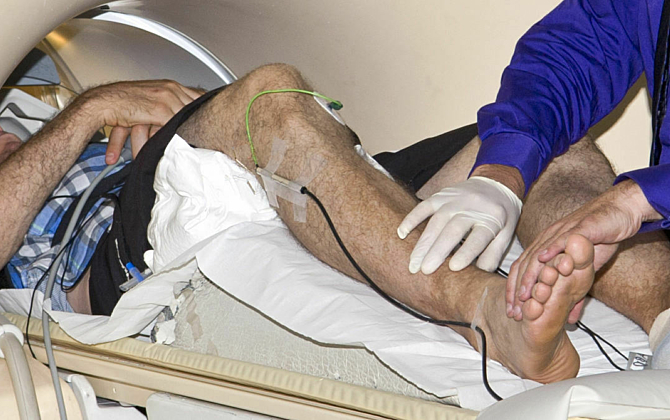Jump to
This NHMRC-funded project aims to identify areas of the brain involved in the divergent sympathetic responses to long-lasting muscle pain, induced by a one-hour intramuscular infusion of hypertonic saline. This mimics some of the early physiological changes seen in the development of chronic pain, and we are trying to identify why certain individuals show a sustained increase in muscle sympathetic nerve activity (MSNA) – recorded via a fine microelectrode inserted into a nerve at the side of the knee – while others show a sustained decrease. These patterns are consistent over time, and cannot be explained by sex, or baseline MSNA, blood pressure, anxiety levels or attitudes to pain. By recording MSNA at the same time as performing functional magnetic resonance imaging (fMRI) of the brain we have identified, in a previous NHMRC-funded project, the cortical and subcortical sites involved in the generation of MSNA and the control of blood pressure. Here we are trying to identify how a constant sensory input (muscle pain) causes two divergent patterns of sympathetic response: an increase in MSNA and blood pressure in some individuals and a decrease in others. We shall also be comparing these changes during experimental muscle pain with those produced by a model of chronic pain: 7 days of muscle pain produced by repeated episodes of eccentric leg exercise.

